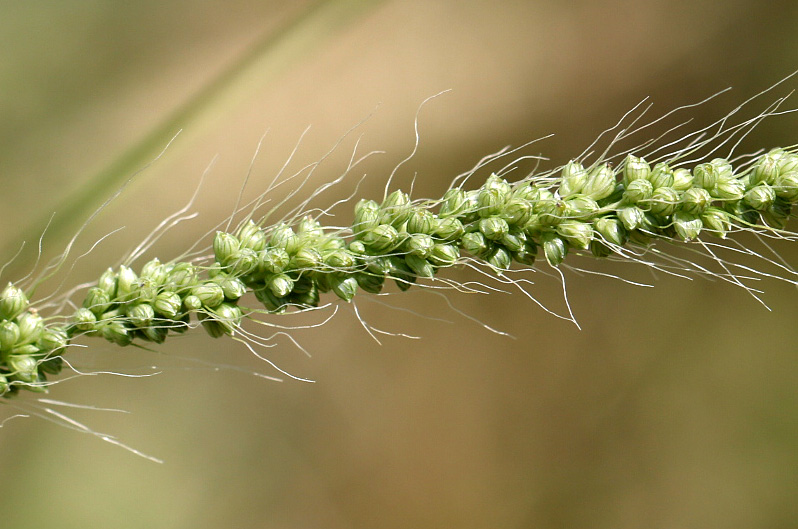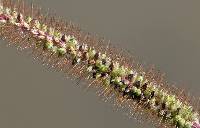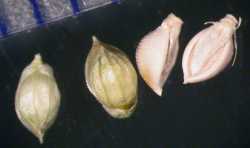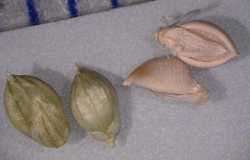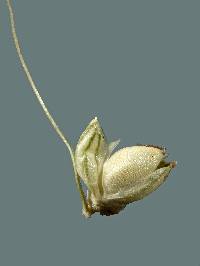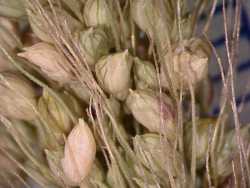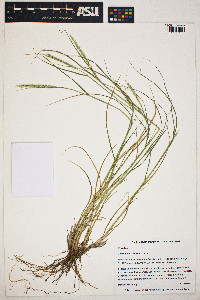|
|
|
|
Family: Poaceae
large-spike bristlegrass
[Setaria leucopila/macrostachya] |
Plants perennial; densely cespitose. Culms 60-120 cm, rarely branched distally, scabrous below the nodes and panicles. Sheaths keeled, glabrous, usually with a few white hairs at the throat; ligules 2-4 mm, densely ciliate; blades 15-20 cm long, 7-15 mm wide, flat, adaxial surface scabrous. Panicles 10-30 cm long, 1-2 cm wide, uniformly thick from the base to the apex, dense, rarely lobed basally; rachises scabrous and loosely pilose; bristles usually solitary, 10-20 mm, soft, antrorsely scabrous. Spikelets 2-2.3 mm, subspherical. Lower glumes 1/3-1/2 as long as the spikelets, 3-5-veined; upper glumes about 3/4 as long as the spikelets, 5-7-veined; lower lemmas equaling the upper lemmas, 5-veined; lower paleas nearly equaling the upper paleas in length and width; upper lemmas transversely rugose; upper paleas convex, ovate. 2n = 54. Setaria macrostachya is abundant in the desert grasslands of the southwestern United States, particularly in southern Arizona and Texas. It extends south through the highlands of central Mexico. It also grows in the West Indies, but is not common there. It is a valuable forage grass in the Flora region. FNA 2003, Gould 1980, Kearney and Peebles 1969 Common Name: large-spike bristlegrass Duration: Perennial Nativity: Native Lifeform: Graminoid General: Densely tufted perennial grass with stems 60-120 cm tall; stems rarely branched above, somewhat geniculate, scabrous below the nodes and panicles. Vegetative: Blades 15-20 cm long, 7-15 mm wide, flat, with scabrous upper surface; ligules densely ciliate, 2-4 mm, with tuft of hair on either side; sheaths keeled, glabrous except for a few white hairs at the throat. Inflorescence: Dense spicate panicle 10-30 cm long, 1-2 cm wide, uniformly thick from base to apex, dense; rachises scabrous and loosely pilose; bristles, 10-20 mm, soft, antrorsely scabrous and pale green, solitary or paired at the base of each spikelet; spikelets 2-2.5 mm, subspherical, pale green, and 2-flowered, the first floret sterile or staminate and the second floret fertile; lower glume one third to half as long as spikelet, 3-5 veined; upper glume about three quarters as long as spikelets, 5-7 veined; fertile lemma reticulate and moderately rugose, often with fine transverse ridges. Ecology: Found on dry flats and in washes, often in partial shade of trees and shrubs, from 3,500-7,000 ft (1067-2134 m); flowers May-October. Distribution: sw US in NV, AZ, CO, NM, TX; south to s MEX and S. Amer. Notes: Setaria spp. have inflorescences with short, mostly contracted branches and single-seeded, hard spikelets subtended by persistent bristles that remain on the plant after the spikelets have fallen. S. macrostachya is distinguished by being an often robust, erect perennial to 1.5 m tall, leaves 7-15 mm wide, columnar spike-like panicles 10-30 cm long, and spikelets that are very rounded on the back (subspherical; see pic). S. leucopila is nearly identical but differs by often having a shorter height (to 1 m); narrower leaves (< 5 mm); usually shorter inflorescences (6-15 cm); and spikelets which resemble an elongated hemisphere (elliptical). Ethnobotany: Unknown Etymology: Setaria is from Latin saeta, a bristle or hair, while macrostachya comes from Greek macro for large and stachys for an ear of grain, referring to the large spike. Synonyms: None Editor: SBuckley 2010, AHazelton 2015 |


